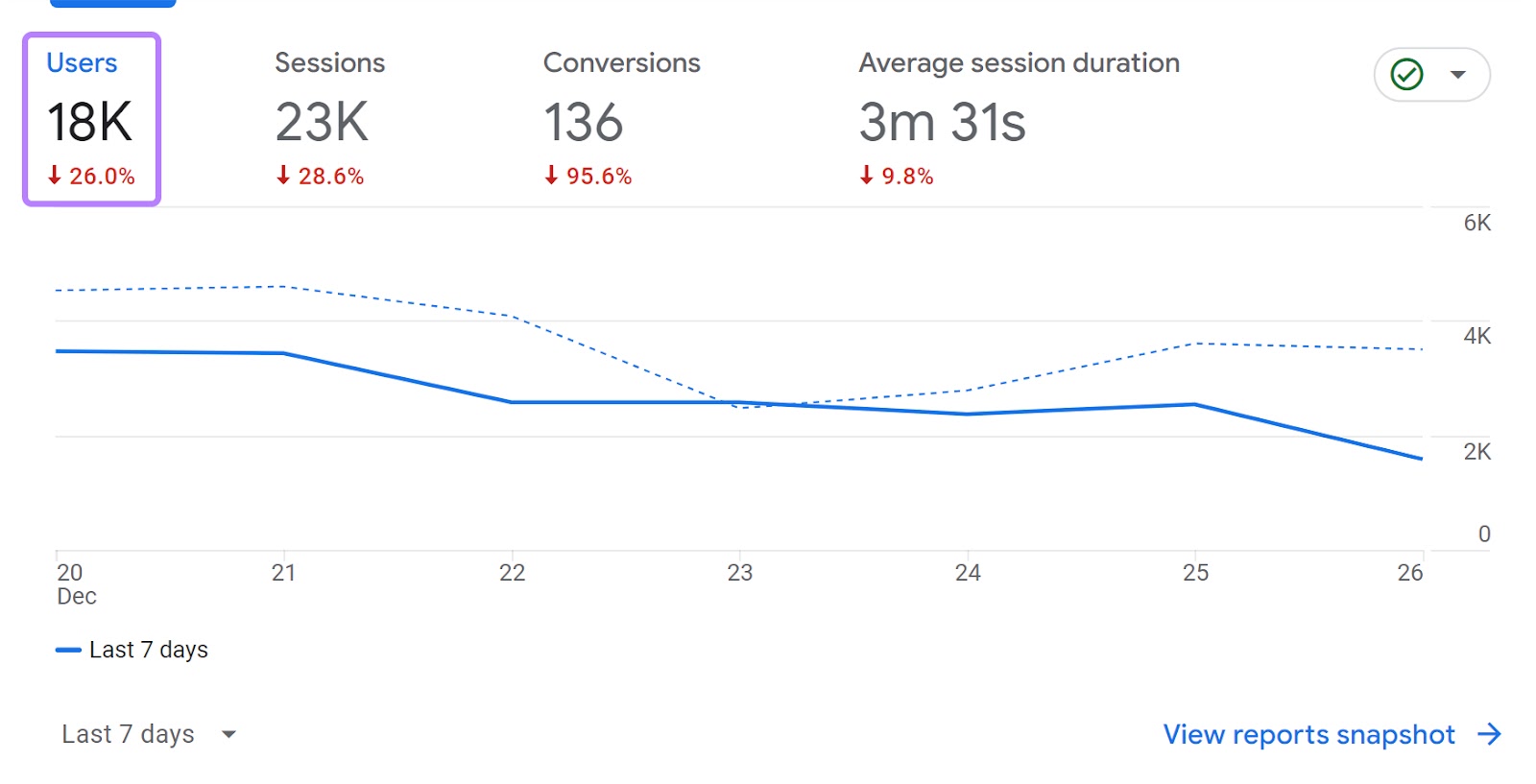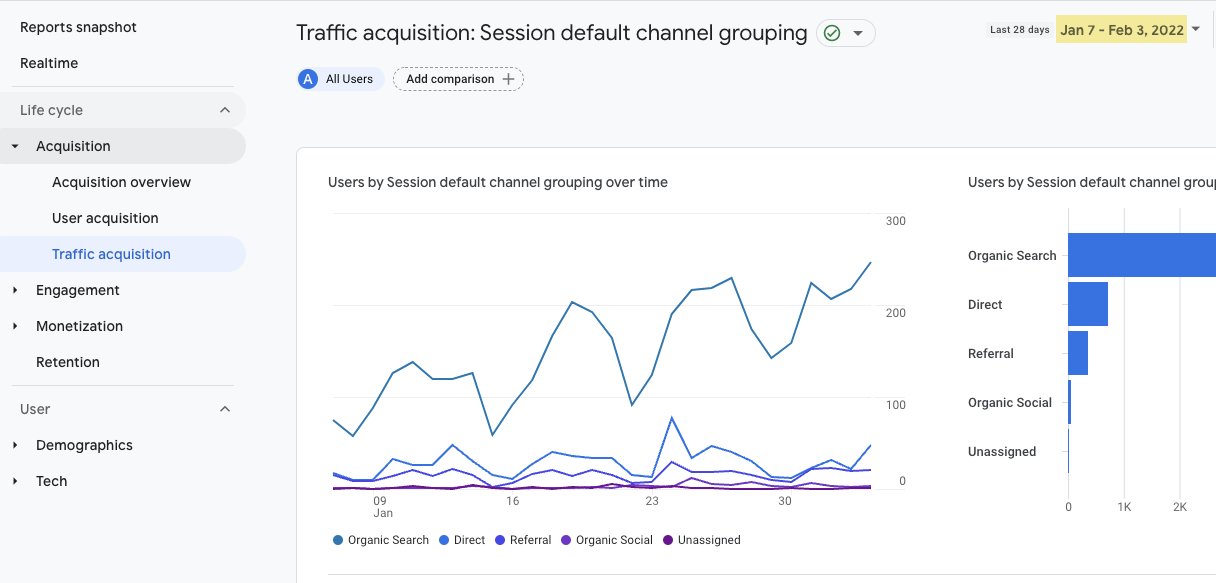Track Success Efficiently With the Many Essential Google Analytics Metrics
Recognizing the nuances of Google Analytics metrics can be pivotal in guiding a company in the direction of success. By diving into the core metrics such as target market demographics, traffic resources, behavior circulation, conversion rates, and jump rate, a riches of understandings awaits.
Target Market Demographics

Group information can assist companies identify trends, choices, and habits of their target audience. As an example, knowing the age that a lot of often goes to a site can influence material development and product offerings. Comprehending the geographical locations of site visitors can aid in centering advertising projects and expanding right into new markets. what is a “metric” in google analytics.
In addition, audience demographics in Google Analytics can disclose important understandings regarding the performance of present marketing efforts. By tracking adjustments in demographics in time, businesses can adjust their methods to better engage with their target market. In general, leveraging target market demographic information in Google Analytics is essential for services looking to improve their on-line presence and drive success.
Web Traffic Resources
When analyzing internet site performance and individual involvement, understanding the sources of website traffic is crucial for services looking for to optimize their online existence. By diving right into the traffic sources in Google Analytics, services can get beneficial insights into where their site site visitors are originating from. This information categorizes traffic into channels such as natural search, straight, reference, social, and paid search.
Organic search traffic originates from internet search engine results, mirroring site visitors that found the website through a search query. Direct web traffic represents individuals who entered the site URL directly into their web browser. Recommendation web traffic comes from outside sites linking to the site. Social traffic is generated from social media platforms. Paid search traffic results from on-line marketing campaign.
Examining these web traffic sources allows organizations to review the efficiency of their marketing strategies, recognize locations for enhancement, and allocate sources sensibly. what is a “metric” in google analytics. By comprehending which channels drive one of the most traffic and conversions, companies can tailor their advertising and marketing efforts to take full advantage of results and boost general performance
Habits Flow
Recognizing the habits circulation of web site visitors is important for services aiming to boost user experience and conversion prices. Habits Circulation in Google Analytics offers a graph of just how users browse through an internet site, showing the path they extract from one web page to another. By analyzing this data, companies can recognize popular pages, drop-off factors, and one of the most typical paths individuals take. This understanding aids in maximizing the site navigating, layout, and material to enhance customer engagement and eventually drive conversions.

Conversion Fees
Determining conversion rates is a crucial facet of examining the you could look here efficiency of a website consequently site visitors into consumers. what is a “metric” in google analytics. Conversion prices refer to the percent of web site visitors that complete a wanted activity, such as buying, registering for a newsletter, or completing a contact kind. By tracking conversion rates through Google Analytics, services can acquire valuable understandings into the efficiency of their website and advertising and marketing techniques
Analyzing conversion rates permits services to identify which areas of their website are successful in driving conversions and which might need renovation. By understanding the variables that influence conversion prices, such as user experience, content top quality, and call-to-action effectiveness, services can optimize their look what i found web site to raise conversions and eventually drive earnings.
Google Analytics provides different devices and reports to track conversion rates, such as objective monitoring, e-commerce monitoring, and multi-channel funnels. By making use of these attributes, businesses can monitor their conversion prices properly and make data-driven decisions to enhance their on-line efficiency.
Bounce Rate
A high bounce rate can show that visitors are not finding the web content they expected, the website is hard to browse, or the landing web page does not line up with the visitor's intent. Recognizing the bounce rate can help internet site owners identify locations for improvement and maximize their site to encourage site visitors to stay longer and discover more web pages. By evaluating the bounce price together with other metrics like time on web page and conversion rates, organizations can acquire valuable understandings right into individual behavior and make notified choices to improve the total performance and customer experience of their site.
Verdict
In final thought, recognizing essential metrics in Google Analytics such as target market demographics, web traffic resources, behavior circulation, conversion rates, and jump rate is important for tracking success properly. Analyzing these metrics makes it possible for businesses to customize advertising and marketing techniques, maximize user experience, and improve material importance. By keeping track of group changes, traffic resources, behavior flow insights, and bounce prices, companies can make enlightened choices to drive overall success.
By delving right into the core metrics such as target market demographics, website traffic sources, habits circulation, conversion prices, and jump price, a wealth of insights awaits. Recognizing the demographics of internet site visitors is essential for services to develop tailored content, optimize user experience, and enhance conversion rates.
By tracking conversion rates with Google Analytics, services can get beneficial understandings right into the efficiency of their internet site and marketing strategies.
By evaluating the bounce rate alongside other metrics like time on page and conversion rates, businesses can gain valuable insights right into customer actions and make educated choices to improve the general performance and user experience of their website.In conclusion, understanding vital metrics in Google Analytics such as target market demographics, website traffic resources, habits flow, conversion Go Here prices, and jump rate is vital for tracking success efficiently.
Comments on “The Ultimate Explanation of What Is a "Metric" in Google Analytics and How to Use It Effectively”